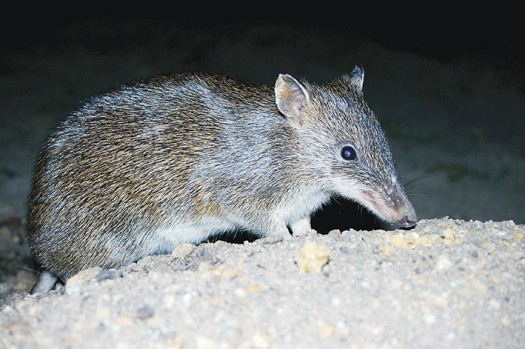
The move has angered conservationists in Frankston and Mornington Peninsula regions.
They are calling the proposal sneaky after the release of a so-called “consultation document on listing eligibility” in early January that called for evidence by 30 January about why the bandicoot should not be delisted.
Forensic zoologist Hans Brunner of Frankston and wildlife expert Mal Legg of Rosebud are leading a campaign calling on Environment Minister Greg Hunt to reject the move and retain protection of the bandicoot.
Mr Legg said evidence of SBB populations recovering in a couple of places in Australia was no reason to remove legal protection.
“Bandicoot populations have been under threat for many years. In our region we have seen a heart-breaking decline as a succession of state governments and their agencies failed to protect the species,” he said.
The federal move is the latest bad news for the iconic mammal that was once abundant in the southeast.
In March 2014, the Coalition state government removed habitat corridors from its plans to protect the southern brown bandicoot in the southeast (“Bandicoot corridor plan axed”, The Times, 3/3/14).
A proposal to create two habitat corridors, or biolinks, centred on the Royal Botanic Gardens at Cranbourne was dumped from the final version of the Sub-Regional Species Strategy for the Southern Brown Bandicoot.
One biolink was meant to run from the botanic gardens south to Western Port’s Quail Island, where until recently there was a viable population of more than 1000 bandicoots after red fox and feral cat removal in recent years (see breakout).
The second was to connect the botanic gardens with Koo Wee Rup swamp and surrounds.
The move led to speculation that housing estate developers had put pressure on the government.
The federal department’s director of Marine and Freshwater Species Conservation Section said Mr Hunt would have the final say on whether the bandicoot was removed from the EPBC Act threatened species list.
Mr Legg said he had “reluctantly watched the crash and local extinction of SBB populations across the southeastern suburbs of greater Melbourne and within the Western Port catchment” over the past three decades.
“We lost bandicoots from sandbelt country between Oakleigh and Carrum Downs between 1980 and 2000, and the extinctions have continued to ripple further south,” he said.
“Today only four populations survive – at the Royal Botanical Gardens Cranbourne, northern Western Port coastline, Quail Island and the former Koo Wee Rup Swamp.”
He said moves since 2006 to protect the bandicoot had failed. “It’s likely the bandicoot is extinct on the peninsula and in Frankston,” he said.
Mr Brunner said he had watched the demise of the bandicoot in the region for more than 40 years. “The population in Pines Flora and Fauna Reserve has gone from 400 individuals in 2000 to zero. It’s a disaster,” he said.
“What is gained by delisting SBBs? Will the government save money on fox and cat control and will developers get the green light to build houses in bandicoot habitat? To declare SBBs safe because in one or two areas where fox control slightly increased their numbers is ridiculous. Take that money away and see what will happen.”
Feral pigs kill coots
THE fragile state of the southern brown bandicoot in the region has been revealed by the loss of about 90 per cent of the population on Quail Island in the northwest corner of Western Port.
About 200 bandicoots were discovered on the island in 2008.
Mal Legg and colleagues, supported by Parks Victoria, spent several years ridding the island of foxes and feral cats, and watched bandicoot numbers grow to about 1000 animals by early 2012.
When Mr Legg returned to the island last August he was devastated to discover fewer than 100 bandicoots.
“They’ve been almost wiped out by feral pigs,” he said.
Mr Legg claimed hunters had released a few pigs on Quail Island and there were now more than 50 damaging the environment.
He said Parks Victoria pest controllers had shot 17 pigs in the past two years “but the population is again increasing”.
Mr Legg said it was not illegal to hunt on Quail Island, and Parks had been trying for more than a decade to change the island’s status to “nature conservation reserve” to exclude hunters.
“Parks Victoria has been stripped of its environmental funding, which means no red fox, feral pig and feral cat control will be conducted on the island. This will likely see the extinction of the Quail Island bandicoots in the next 12 months.”